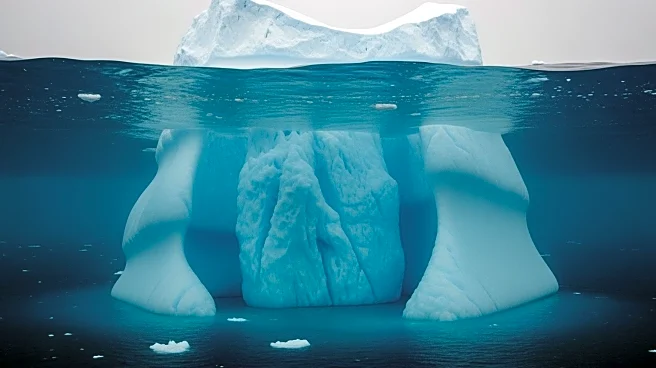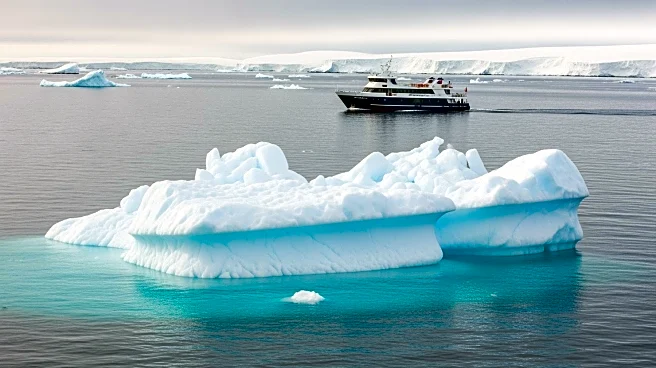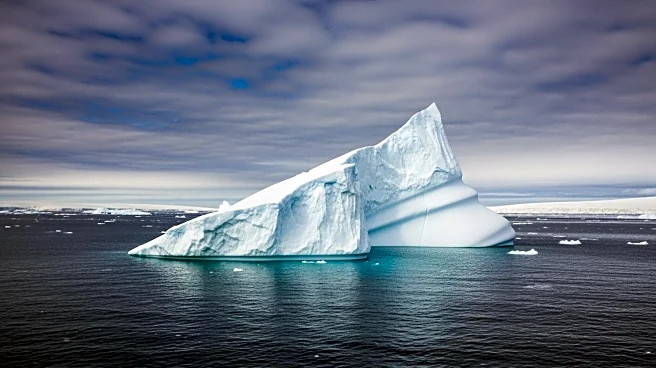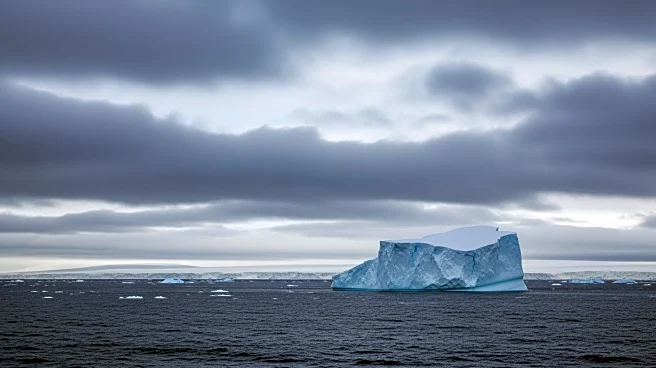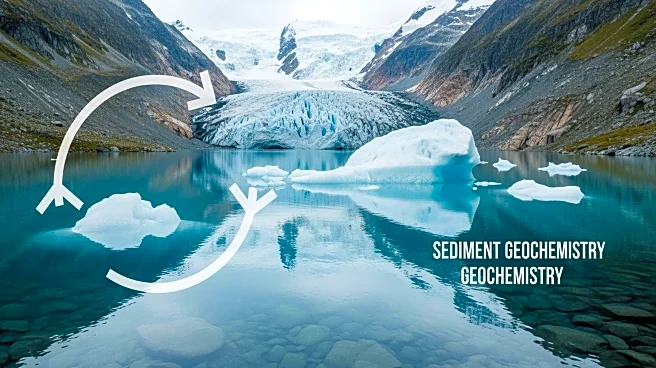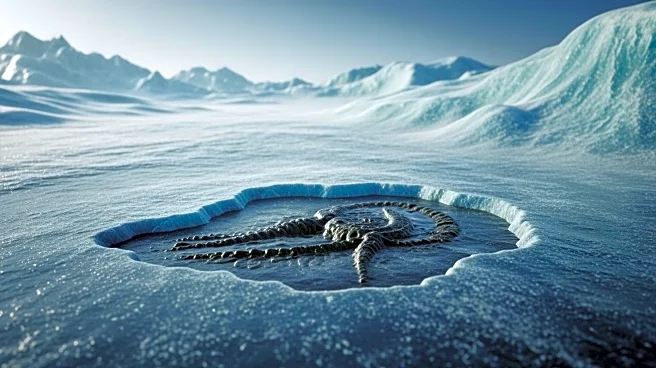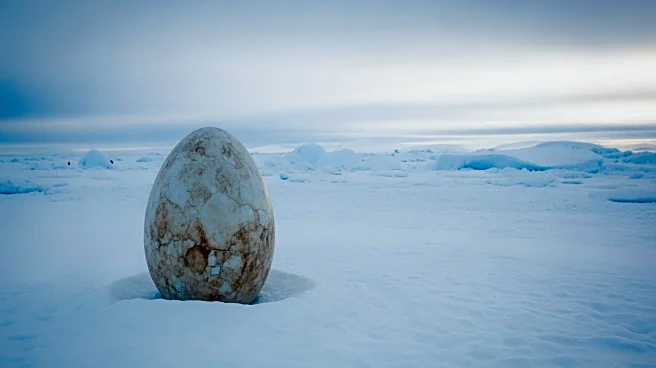What's Happening?
Researchers from the British Antarctic Survey have discovered a vast granite body beneath the West Antarctic Ice Sheet, specifically under Pine Island Glacier. The granite, almost 100 km across and 7 km thick, was identified through precise gravity measurements
collected by airborne surveys. The study, published in Communications Earth & Environment, links scattered pink granite boulders found in the Hudson Mountains to this hidden geological feature. The granite formed around 175 million years ago during the Jurassic period. This discovery provides vital clues to the historical behavior of Pine Island Glacier, aiding in the refinement of ice sheet computer models crucial for predicting future climate change impacts.
Why It's Important?
The discovery of the hidden granite beneath the West Antarctic Ice Sheet is significant for understanding the geological history and future behavior of the region. The findings offer insights into past ice thickness and flow regimes, which are essential for refining models that predict how Antarctica will respond to climate change. The geology beneath Pine Island Glacier influences ice movement and meltwater drainage, impacting sea level rise projections. This research contributes to global efforts to understand and mitigate the effects of climate change, particularly for coastal populations vulnerable to rising sea levels.
What's Next?
The discovery will enhance computer models of ice flow, improving predictions of sea level rise. Researchers will continue to study the geological features beneath the ice sheet to gain a deeper understanding of its dynamics. The findings may lead to further exploration and surveys in Antarctica, potentially uncovering more hidden geological features. The integration of geology and geophysics in this study highlights the importance of interdisciplinary approaches in climate research, which could influence future scientific methodologies and collaborations.
Beyond the Headlines
The discovery of the hidden granite beneath the ice sheet underscores the importance of geological research in understanding climate change. The integration of geological dating with geophysical surveys exemplifies the value of interdisciplinary approaches in scientific research. The findings highlight the complex interactions between geological features and ice dynamics, offering new perspectives on the impact of climate change on polar regions. This research contributes to the broader understanding of Earth's geological history and its implications for future climate scenarios.
